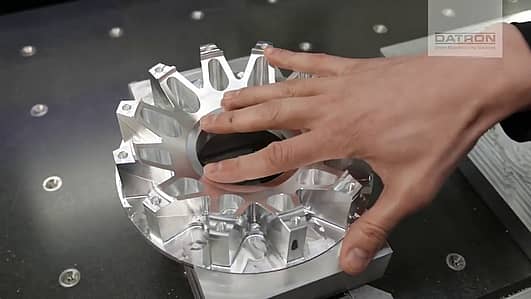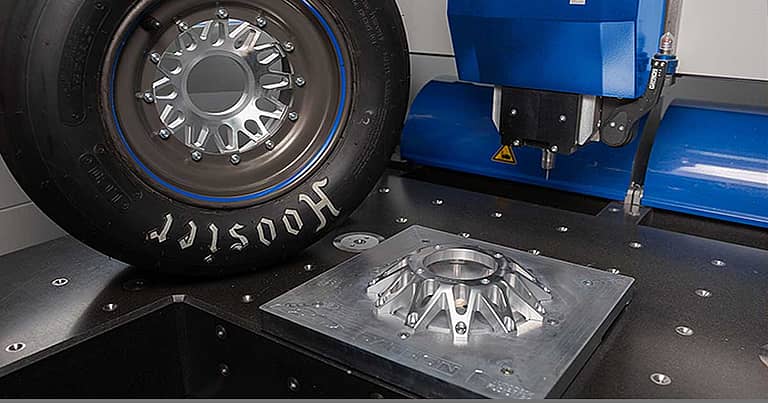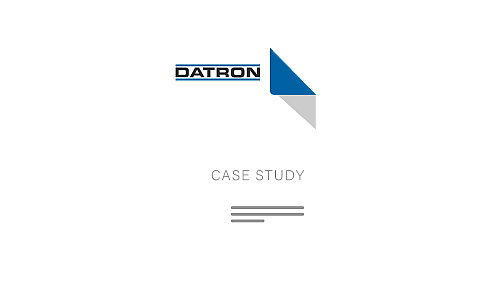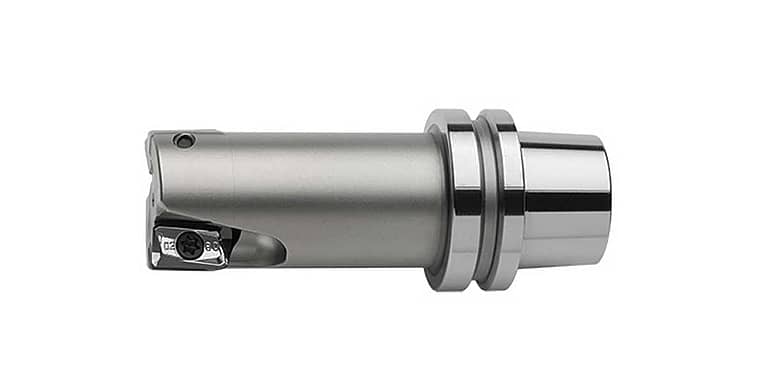Deburring is a machining or finishing process used to remove sharp edges, burrs, or unwanted material from the surface of a workpiece giving it a polished and finished look. In this article, we will help you understand what is deburring, deburring tools, and how to use a deburring tool to remove sharp edges from your workpieces.
What Is A Burr?
Burrs are small, often sharp metal or plastic protrusions that can occur during various manufacturing processes, such as cutting, drilling, milling, or stamping. These burrs can be undesirable for several reasons including safety, functionality, and aesthetics. For safety purposes, burrs can be sharp and pose a safety hazard to workers handling the parts. In precision engineering, burrs can affect the functionality of a part or interfere with the assembly of mechanical components. Lastly, for aesthetics, in applications where appearance is important, such as in the automotive or aerospace industries, burrs can detract from the overall quality and finish of a product.
With this information, let’s dive deeper into what is deburring and how to use a deburring tool to remove sharp edges on your workpieces.
How To Remove Burrs From Metals and Materials
CNC machines offer precision and repeatability. These components make CNC machines ideal for industries where high-quality finishes and rigid tolerances are essential, such as aerospace and medical device manufacturing. Here’s a general guide on how to remove burrs from metals and materials using a CNC machine keeping in mind that each project may have its own unique needs.
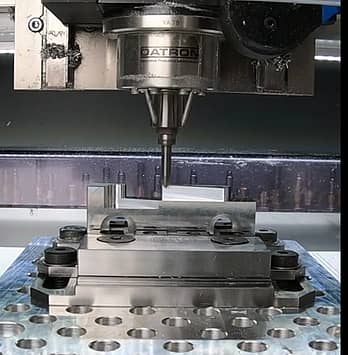
First, select the appropriate tool based on the material and the type of burrs you need to remove. Common tools include end mills, countersinks, and deburring cutters. The choice of tool will depend on factors like the material’s hardness, burr size, and the desired finish. DATRON offers quality carbide tools that are German engineered for precision, performance, and extended tool life, which is perfect for deburring projects, but we will cover more on tools later in the article.
Next, you will need to program the CNC machine. Load your workpiece into the machine’s workholding system, ensuring it is securely fixed. Create a CNC program that specifies the toolpath for deburring including information about the tool’s speed, feed rate, depth of cut, and toolpath strategy. Use CAM software to generate the toolpath if you’re not manually programming the CNC machine.
The choice of toolpath strategy depends on the geometry of your workpiece and the location of burrs. Common strategies include contouring, chamfering, and face milling. Ensure that the toolpath covers all areas with burrs, and that the tool approaches the workpiece at the correct angles to remove the burrs effectively. Set the appropriate cutting speed (RPM) and feed rate (inches per minute or millimeters per minute) for the chosen tool and material. Be sure to regularly inspect the cutting tool for signs of wear and replace it as needed to maintain the quality of the operation.
The last step is to begin running the CNC machine and closely monitor the operation to ensure that the burrs are being effectively removed. After deburring, inspect the workpiece to verify that all burrs have been removed to the desired level and make any necessary adjustments to the CNC program if burrs remain.
Now that you know how to remove burrs, it is important to know what a deburring tool is and how to use a deburring tool properly in different applications.
What Is A Deburring Tool?
A deburring tool is designed specifically for removing burrs and sharp edges from the surface of a workpiece. These tools come in various shapes and sizes, and the choice of tool depends on the type of workpiece and the specific deburring requirements. The tool also depends on the size and location of the burrs, and the desired finish quality.
Here are some common types of deburring tools used with CNC machines:

Countersinks and Chamfering Tools: Countersinks and chamfering tools are used to create beveled edges or chamfers on holes or edges. This not only removes burrs but also improves the edge’s finish and functionality.
Deburring Cutters: These cutters are specialized tools designed specifically for deburring applications. They often feature a high number of flutes that are optimized for burr removal.
Deburring Brushes: Deburring brushes are rotary tools equipped with abrasive bristles. They are effective for removing burrs and achieving a uniform finish, especially on curved or irregular surfaces.
CNC-Mounted Deburring Tools: Some CNC machines are equipped with deburring toolholders that can accommodate various inserts or blades. These tools are often programmable, allowing for automation within the CNC machining process.
You know what tools are needed, now it’s time to know how to use a deburring tool taking into consideration the material you are removing, the burr type, toolholder compatibility, and the CNC machine being used.
How To Use A Deburring Tool
Once you know what tools to use, here is how to use a deburring tool depending on the part you are trying to make. It’s important to remember that deburring different materials on a CNC machine requires consideration of the unique properties of each material and tailoring your approach accordingly.
Here are some guidelines for deburring common materials like metals, plastics, and composites on a CNC machine and how to use the tools accordingly.
Deburring Metals
When deburring metals such as steel, aluminum, or brass, choose a high-speed steel or carbide tool designed for metalworking. Use contouring toolpaths for flat surfaces, chamfering toolpaths for edges, and spot-drilling toolpaths for holes. Be sure to adjust the toolpath to avoid overheating, especially when working with aluminum. You can do this by controlling the feed rate and depth of the cut. Determine the appropriate cutting speed (RPM), feed rate (inches per minute or millimeters per minute), and depth of cut based on the material and tool specifications and be sure to use lubrication or coolant to reduce heat buildup and improve tool life.
Deburring Plastic
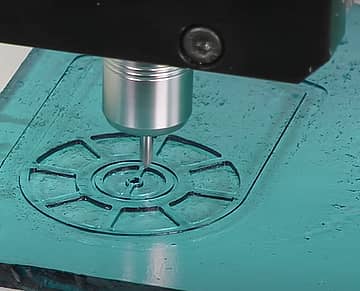
When deburring plastics such as acrylic, nylon, and Delrin, select high-quality, sharp tools suitable for plastics to avoid melting or smearing. Consider a single-flute or two-flute end mill for efficient chip evacuation. Use contouring toolpaths for removing burrs on flat surfaces and edges. Be cautious with aggressive toolpaths to prevent melting or distortion of plastic. Your cutting parameters should be set at a lower cutting speed than those used for metals to minimize heat generation. You can also reduce the depth of cut to prevent excessive material removal and melting. Cooling may not be necessary for plastic deburring, but it can be helpful in some cases. Ensure that the coolant or cutting fluid is compatible with the plastic material.
Deburring Composites
Before deburring composites such as carbon fiber reinforced plastics, always consult material-specific guidelines and consider conducting test runs with scrap pieces to optimize the deburring process for each material type. Additionally, safety precautions and appropriate personal protective equipment (PPE) should be observed when working with CNC machines and materials.
Other Factors to Consider
There are other factors to consider that will impact how you use a tool. An example of this is the burr type you are looking to remove. Different tools are better suited for different types of burrs, such as edge burrs, which refers to a small, unwanted protrusion or irregularity along the edge of a workpiece. Some other types of burrs include rollover or exit burrs, tear burrs, and a cut-off (or breakout burr) to name a few.
Another aspect one must consider is the toolholder compatibility of their machine. It is important to verify that the tool is compatible with the toolholder and spindle of your CNC machine. The same concept goes for the shape and the size of the burr you want to achieve, and the size of the tool being used. Choose a tool that matches your deburring needs and is compatible with the machine you are using.
Lastly, tool coating is another part of this process that needs to be considered. Some deburring tools come with coatings or treatments that enhance durability and performance. These coatings provide a protective layer that can improve cutting efficiency, reduce friction, increase tool life, and minimize wear. Different coatings are suitable for specific materials and machining conditions.
Start Your Deburring Journey Today!
We have covered what deburring is and how to use a deburring tool in this article – now it’s time to begin your project! But do you know who can help you get started on your milling journey?
Here at DATRON, we’re the milling experts, and we’re here to help everyone from complete novices to master machinists. Ready to get your milling project started? All you have to do is contact us today!

